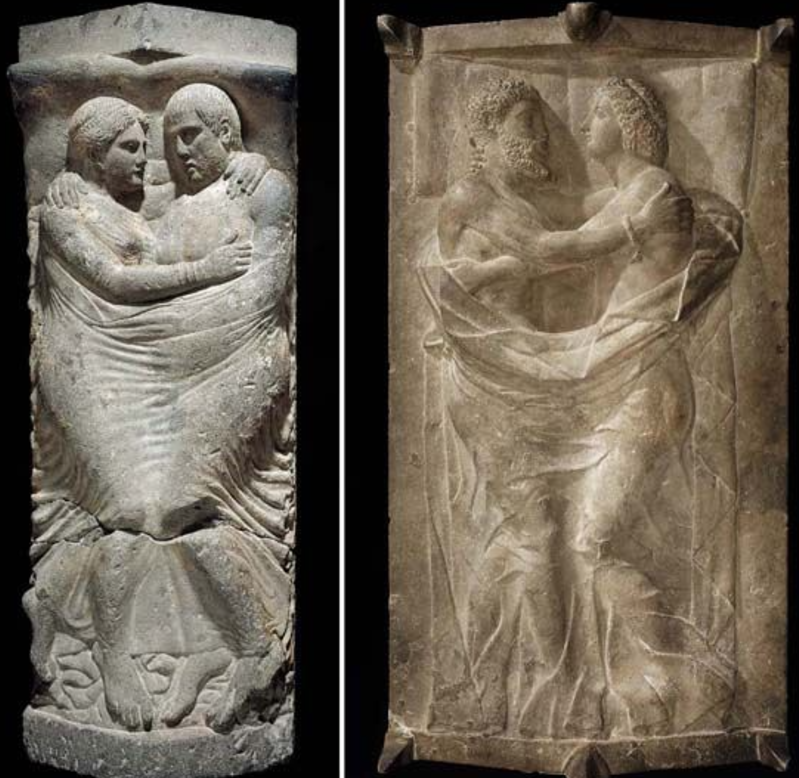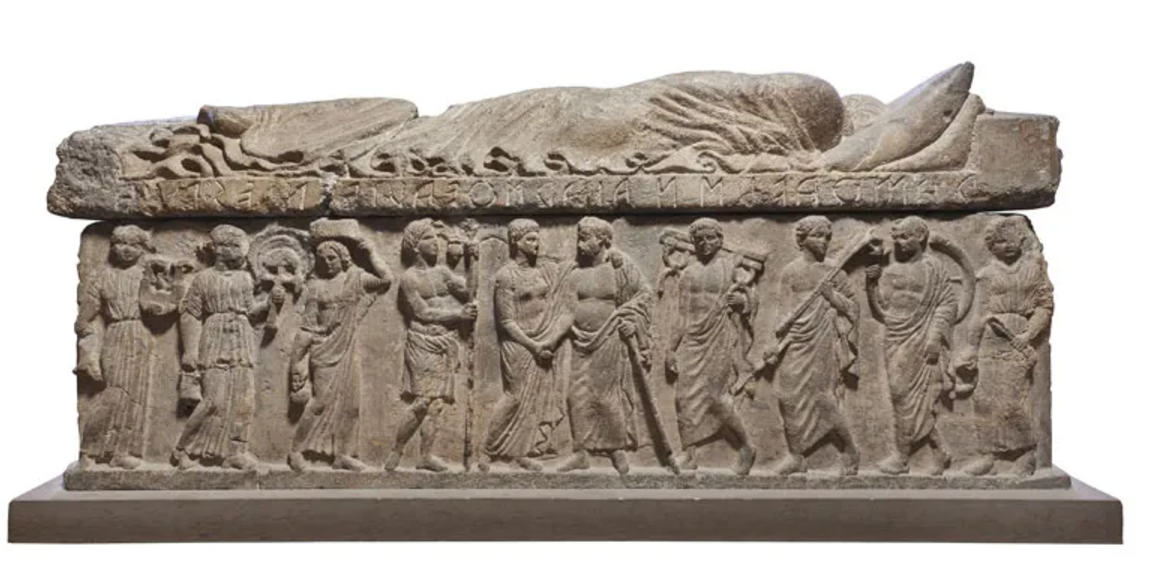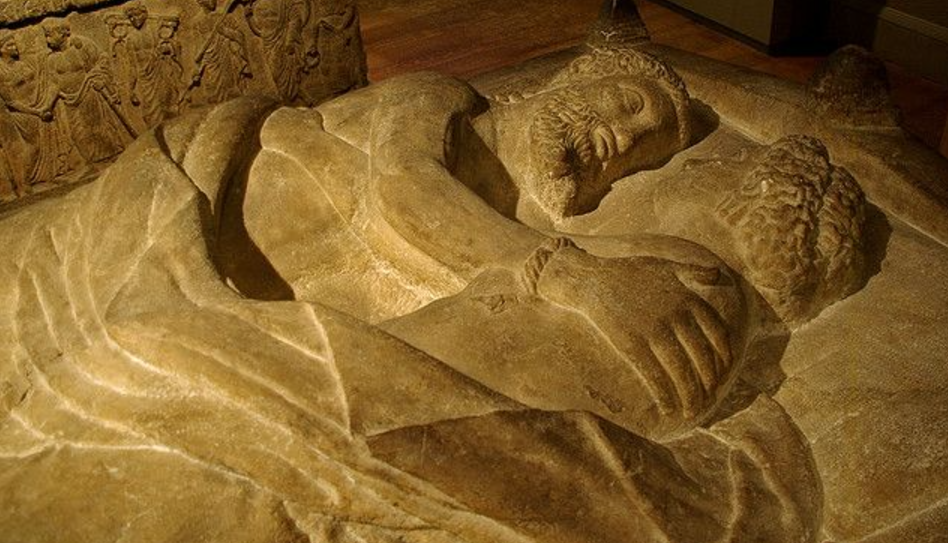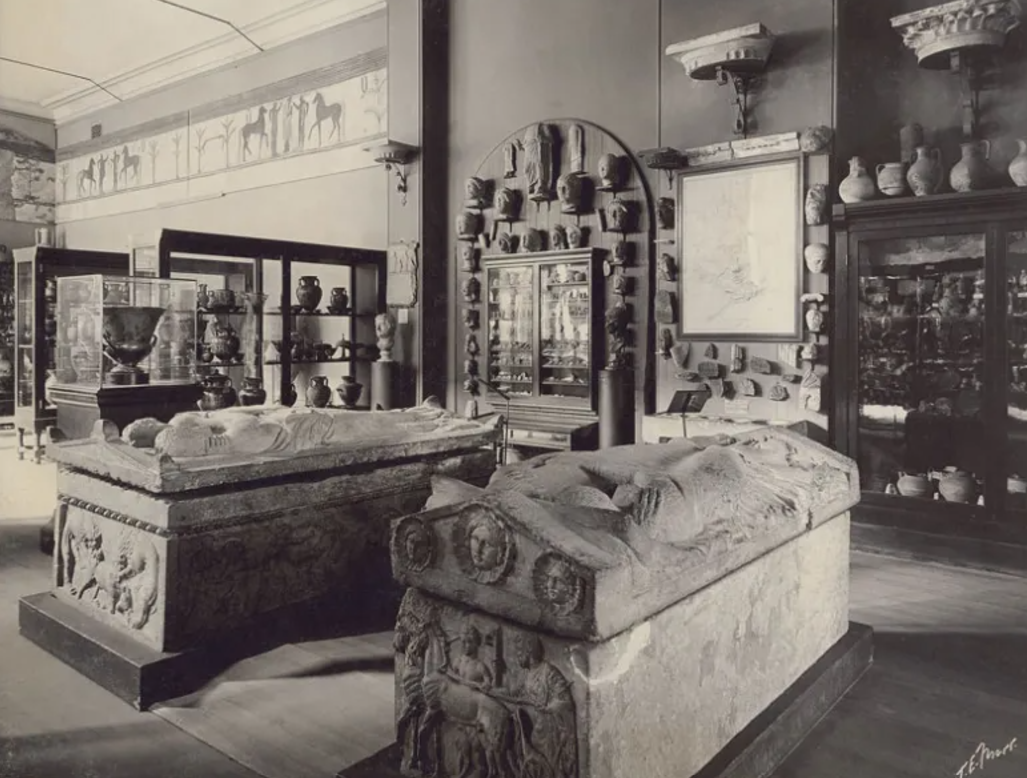The Etruscan sarcophagus and its intricately carved lid, depicting a husband and wife, stand as a remarkable artifact of late classical or early Hellenistic art, dating back to approximately 350–300 BC. Originating from the tomb of the Tetnies family in Etruria, this sarcophagus provides invaluable insights into Etruscan culture, artistry, and beliefs about life and death. Let’s explore and learn about this mysterious ancient sarcophagus with archeology.dulichvn.net
Historical Context of the Etruscan Sarcophagus
Origins in Etruria
The sarcophagus was discovered in Vulci, an ancient city in the Lazio region of Italy, a significant center of Etruscan civilization. Vulca was renowned for its rich cultural and artistic heritage, evident in the exquisite artifacts unearthed from its tombs.

This particular sarcophagus belonged to Thanchvil Tarnai and her husband, Larth Tetnies, members of the prominent Tetnies family. Inscribed with the names of the deceased, it identifies Larth as the son of Arnth Tetnies and Ramtha Vishnai, further solidifying the piece’s historical significance.
Era of Creation
The late classical and early Hellenistic periods marked a time of cultural fusion in Etruria, as Greek influences merged with indigenous traditions. This sarcophagus reflects this artistic synthesis, showcasing intricate details that blend local craftsmanship with Hellenistic aesthetics.
Artistic Features of the Etruscan Sarcophagus
Lid Depiction of Husband and Wife
The lid of the sarcophagus is a stunning representation of Thanchvil Tarnai and Larth Tetnies. Depicted reclining together as if at a banquet, their poses embody the Etruscan celebration of life and the enduring bond of marriage.

The figures are carved with meticulous attention to detail, capturing the couple’s facial expressions, clothing, and accessories. This intimate portrayal reflects not only the artists’ skill but also the cultural importance placed on familial and marital unity.
Carvings and Inscription
The base of the sarcophagus features intricate carvings, including mythological scenes, floral motifs, and possibly representations of the journey to the afterlife. The inscription, a hallmark of Etruscan funerary art, provides crucial genealogical information and underscores the importance of family lineage in Etruscan society.
Symbolism and Beliefs
The imagery and craftsmanship suggest a deep belief in an afterlife where the couple would continue their journey together. The reclining pose, often associated with banqueting, symbolizes abundance and contentment in the next world. This optimistic view of death was the cornerstone of Etruscan spirituality.
Cultural Significance of the Sarcophagus
Etruscan Society and Identity
This sarcophagus offers a glimpse into the social and cultural identity of the Etruscans. The prominence of the Tetnies family, evident in the grandeur of the tomb and artifact, highlights the societal importance of lineage and status.

The equal representation of husband and wife on the lid also speaks volumes about gender roles in Etruscan society. Unlike many contemporary cultures, Etruscan women enjoyed relatively high status, often appearing alongside their husbands in art and inscriptions.
Preservation of Art and History
As an artifact, the sarcophagus serves as a vital link to understanding Etruscan craftsmanship and funeral practices. Its preservation allows historians and archaeologists to piece together the religious and social customs of a civilization that profoundly influenced the development of Roman culture.
A Reflection of Greek Influence
The artistic elements of the sarcophagus, such as its realism and narrative carvings, reveal a strong Hellenistic influence. This cultural exchange illustrates the interconnectedness of ancient Mediterranean civilizations and underscores the Etruscans’ role as a bridge between Greek and Roman art.
The Legacy of the Etruscan Sarcophagus Today
Educational Value
The sarcophagus is a valuable educational tool, providing insight into the Etruscan worldview, family dynamics, and artistic achievements. It remains a centerpiece in museums and exhibitions, drawing attention to the sophistication of Etruscan culture.

Inspiration for Modern Art and Literature
The timeless beauty of the sarcophagus continues to inspire artists and writers. Its themes of love, unity, and the afterlife resonate across cultures and eras, making it a compelling subject for creative interpretation.
Preservation and Study
Ongoing efforts to conserve and study artifacts like this sarcophagus ensure that the legacy of the Etruscans is not lost. Advanced technologies, such as 3D scanning, allow for deeper exploration of its details, helping researchers uncover new facets of Etruscan life and art.
Conclusion: A Timeless Tribute to Love and Legacy
The Etruscan sarcophagus of Thanchvil Tarnai and Larth Tetnies is more than just a burial artifact—it is a testament to the enduring bonds of love, the artistic brilliance of the Etruscans, and their profound belief in life beyond death. Its intricate carvings and inscriptions immortalize the couple’s legacy, offering modern audiences a portal into a civilization that continues to captivate and inspire.

CÁC TIN KHÁC
Mary Walton: The Forgotten Inventor Who Helped Clean Up America’s Cities
Tomb of Queen Nefertari in the Valley of the Queens, Egypt
Discover the Hypostyle Hall of the Temple of Hathor at Dendera
Venus de Losange: Unveiling the Mystery of a 20,000-Year-Old Paleolithic Icon